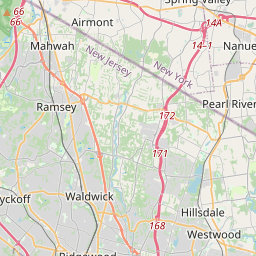Orangetown American Revolution Bicentennial
Historical marker location:






1765: The Stamp Act is passed by the British Parliament, imposing a tax on American colonists for various printed materials. This sparks widespread protests and resistance among the colonists.
1770: The Boston Massacre occurs when British soldiers fire on a crowd of American colonists in Boston, resulting in the death of five colonists. The event further escalates tensions between the colonists and British authorities.
1773: The Boston Tea Party takes place as colonists, disguised as Native Americans, dump tea from British East India Company ships into Boston Harbor in protest against the Tea Act.
1774: The First Continental Congress convenes in Philadelphia. Delegates from twelve of the thirteen colonies gather to discuss grievances against British policies and plan a united response.
1775: The Battles of Lexington and Concord mark the beginning of armed conflict between British troops and American colonial militia. The "shot heard 'round the world" ignites the Revolutionary War.
1776: On July 4, the Second Continental Congress adopts the Declaration of Independence, drafted primarily by Thomas Jefferson. The document asserts the colonies' independence from Britain and outlines the principles of individual rights and self-government.
1777: The American victory at the Battle of Saratoga in New York proves to be a turning point in the war. It convinces the French to openly support the American cause and enter the war as allies.
1778: The Treaty of Alliance is signed between the United States and France, formalizing their military alliance. France provides crucial support to the American forces, including troops, naval assistance, and financial aid.
1781: The Siege of Yorktown takes place in Virginia, where combined American and French forces, led by General George Washington and French General Rochambeau, successfully trap British General Cornwallis and his troops. Cornwallis surrenders on October 19, effectively ending major hostilities in the Revolutionary War.
1783: The Treaty of Paris is signed, formally ending the American Revolutionary War. Great Britain recognizes the independence of the United States and establishes its boundaries. The treaty also grants fishing rights to American fishermen in the waters off Newfoundland and Nova Scotia.
1787: The Constitutional Convention convenes in Philadelphia to draft a new constitution to replace the Articles of Confederation, which proved ineffective in governing the newly independent nation.
1788: The United States Constitution is ratified by the required number of states and goes into effect. It establishes a strong federal government with separate branches and a system of checks and balances.
1789: George Washington is inaugurated as the first President of the United States, and the new federal government is established in New York City.
This timeline provides a general overview of the major events during the American Revolution, but it is important to note that there were numerous other battles, diplomatic negotiations, and developments that occurred during this period.
The Erie Canal, which opened in 1825 and connects the Hudson River to the Great Lakes, was originally mocked as "Clinton's Folly" after Governor DeWitt Clinton, who championed the project. However, the canal became an economic boon for New York and helped turn the state into a major commercial center.
European settlement of Rockland County began in the early 17th century when Dutch and French Huguenot settlers established communities along the Hudson River. The Dutch West India Company purchased the land from Native American tribes in the mid-1600s, and the area became known as Orange County. In 1798, Rockland County was carved out of Orange County, and it was officially established as a separate county.
During the American Revolutionary War, Rockland County played a significant role. British forces occupied the area for a large portion of the war, making it a central location for military operations. Notably, the Battle of Stony Point took place in 1779, where American forces successfully recaptured the strategic Stony Point fort from the British in a daring midnight assault.
In the 19th century, Rockland County experienced significant industrial growth. The Hudson River provided an ideal shipping route for goods, leading to the development of thriving industries, such as brickmaking, quarrying, and textile manufacturing. The construction of railroads further fueled economic growth and helped connect the county to nearby cities like New York City.
Today, Rockland County is a desirable suburban area with a diverse population and a thriving economy. It is known for its charming towns and villages, picturesque landscapes, and historical landmarks. The county's history is celebrated and preserved through various museums, historical societies, and community events, offering residents and visitors a glimpse into its storied past.
Rockland County Timeline
This timeline provides a concise overview of the key events in the history of Rockland County, New York.
- 1609: Henry Hudson, an English explorer, sails up the Hudson River and explores the area now known as Rockland County.
- 1664: The Dutch formally cede New Netherland to the English, and this region becomes part of the Province of New York.
- 1683: Rockland County is established as one of the original 12 counties of New York.
- 1777: British forces occupy Nyack during the American Revolutionary War.
- 1798: The Nyack Turnpike, the first major road in the county, is established.
- 1806: The Village of Haverstraw is incorporated.
- 1828: The Erie Railroad, the first major railroad in the county, opens.
- 1845: The county's name changes from Orange County to Rockland County.
- 1854: The West Shore Railroad is completed, providing improved transportation options.
- 1883: The Nyack Suspension Bridge, now known as the Tappan Zee Bridge, is opened.
- 1929: Palisades Interstate Park is established, protecting scenic areas along the Hudson River.
- 1950s: Suburbanization begins, with many new housing developments springing up in the county.
- 1994: The Tappan Zee Bridge is replaced by a new bridge, now called the Governor Mario M. Cuomo Bridge.